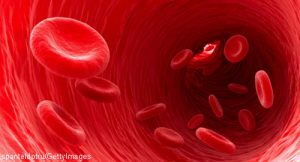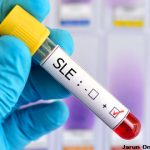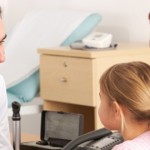 The growing literature suggests a person’s microbiome may affect the development of the autoantibodies that lead to systemic lupus erythematosus (SLE). A 2019 study published in Arthritis & Rheumatology reports a possible link between plasma microbial translocation, a person’s microbiome and autoantibody development in first-degree relatives of SLE patients.1
The growing literature suggests a person’s microbiome may affect the development of the autoantibodies that lead to systemic lupus erythematosus (SLE). A 2019 study published in Arthritis & Rheumatology reports a possible link between plasma microbial translocation, a person’s microbiome and autoantibody development in first-degree relatives of SLE patients.1
“We know that around 90% of lupus patients are women and that a number of factors are at play,” says corresponding author Gary S. Gilkeson, MD, distinguished university professor at the Medical University of South Carolina. Research into HIV shows that some of this heightened response may be related to the fact that the guts of women are more permeable than men’s. “The female immune response is stronger, more responsive and a bit more potent,” he says.
Gut Permeability
“Under normal conditions,” the study authors write, “the intestinal epithelial lining and factors secreted from it create a barrier separating the host from environmental antigens. However, in various disease states, this barrier may be compromised, leading to the translocation of microbial products into the systemic circulation, which may induce chronic inflammation and systemic tissue damage.” In short, microbial products get into the circulatory system, react with the immune system and trigger different responses. Dr. Gilkeson and colleagues wanted to know if microbial translocation makes a difference in the development of lupus.
“Translocation happens in everybody, and it happens more in women than men,” says Dr. Gilkeson. “We studied first-degree relatives, because SLE patients themselves are on medications and other interventions that may impact what gets through the gut and what doesn’t.”
Plasma samples were taken from two cohorts. One cohort consisted of 18 unrelated, healthy controls and 18 first-degree relatives of SLE patients. The second cohort comprised 19 healthy controls and 21 SLE patients. All subjects were assessed for autoantibody levels using autoantigen microarrays, lipopolysaccharide levels using the Limulus amebocyte assay and microbiome composition using microbial 16S ribosomal DNA (rDNA) sequencing.
All 36 participants in the first cohort were African American men or women. The 40 people enrolled in the second cohort were all women: 20 Caucasian (12 healthy controls and eight SLE patients) and 20 African American (seven unrelated, healthy controls and 13 SLE patients).
Plasma SLE-Related Antibodies Found
Researchers found that plasma levels of SLE-related autoantibodies were higher in SLE patients and their first-degree relatives than in controls. As expected, the autoantigen array results showed greater plasma levels of a large spectrum of autoantibodies in first-degree relatives than in unrelated, healthy controls, as well as in SLE patients when compared with healthy controls.



